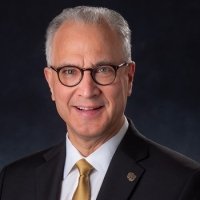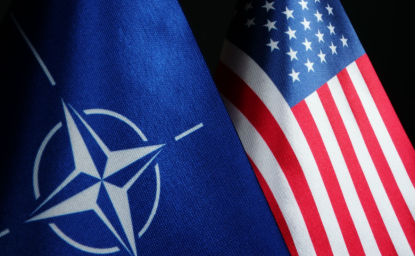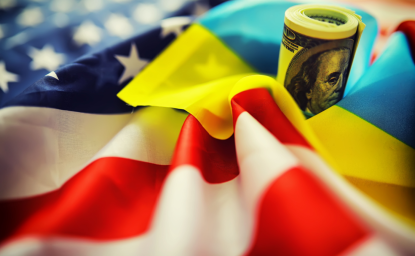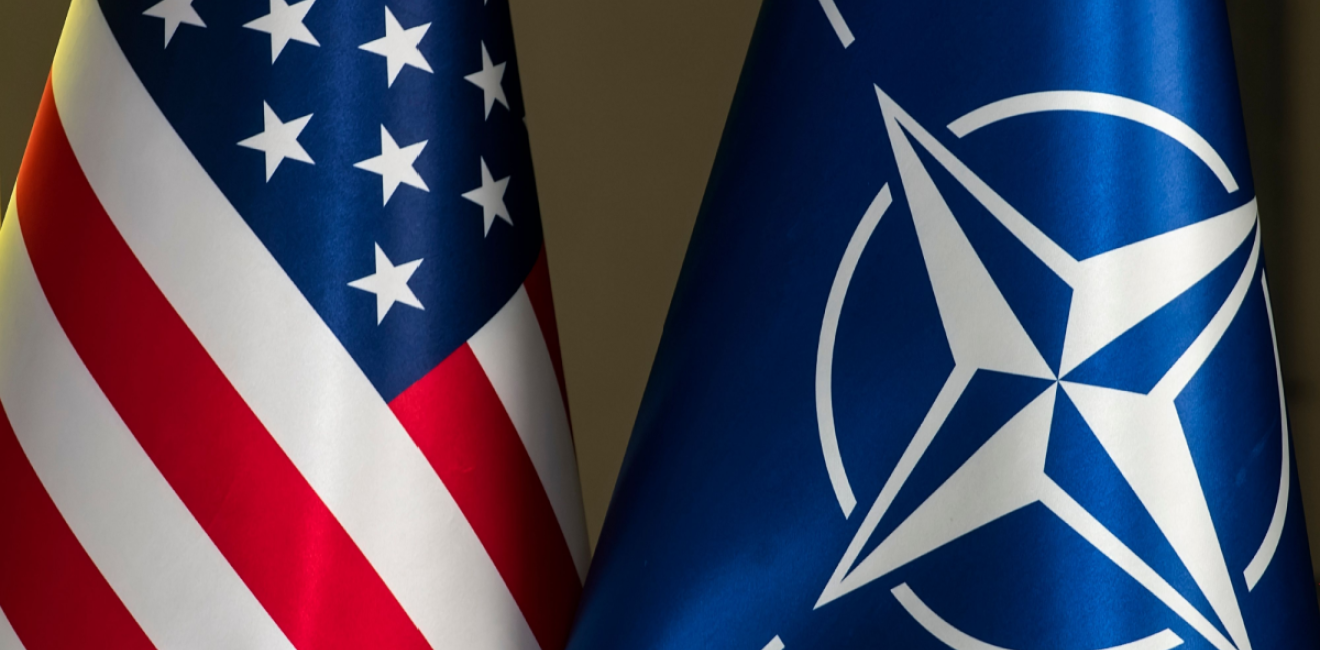On the 75th anniversary of the North Atlantic Treaty Organization (NATO), it is appropriate to assess the value of the transatlantic alliance, its adequacy for the challenges it faces, and the role the US should play. In doing so, who better to ask than Americans serving alongside their European counterparts. During a recent swing visiting US Air Force operations in Europe, I asked airmen (Air Force term including all its members), “Why is the US military in Europe?” The answers I received from mechanics, communications technicians, medical aides, and others supplemented insightful briefings. Both revealed that the challenges we face are multiplying, that they are better faced together, and that they are most effectively met with continued US leadership.
Challenges Multiplying
While those living in the safety afforded by the nation’s military may rarely reflect on the risks that underlie the importance of a US presence in Europe and beyond, it is starkly evident to those serving abroad.
Rising threats are not being fully addressed.
With Russia waging war against Ukraine near the bases I visited, unsurprisingly, many highlighted the Russian threat, including the need to scramble jets hundreds of times a year to intercept Russian jets flying up against NATO’s borders. Briefings profiled intrusions by Russia into Polish airspace and near misses, including a Russian jet shooting at (and thankfully missing) a UK surveillance plane in international airspace. Russia’s disinformation campaign sought to influence recent European elections. Iran and North Korea supplying armaments and China supplying dual-use goods facilitates Russia’s continued aggression. This has made unprecedented sanctions on Russia and significant NATO support for Ukraine necessary, but as of yet insufficient to secure peace on the European continent.
Just south of Europe is Africa that will represent 26% of the world’s population by 2050 and 38% by 2100. Briefers from the air component of America’s Africa Command based in Germany see growing danger posed by rising unrest on the continent as the demands of an exploding population are not adequately met by their governments. A briefer noted that there are “currently conflicts in Burkina Faso, Ethiopia, Libya, Mali, Somalia, and Sudan.” They also cited acute challenges such as the need to evacuate US troops in Niger following a coup whose leaders aligned with Russia. The degree to which China exceeds American economic engagement in Africa complicates the military’s engagement. The US military maintaining a rotational presence in Africa is seen as necessary to monitor violent extremist organizations that could pose a security threat to Americans. Briefers highlighted that the current geopolitical competition requires greater support for partners on the continent with their economic and military capacity-building efforts.
Southeast of Europe in the Middle East, several pointed to the conflict in Gaza and the challenge of securing the Red Sea as proof that NATO continues to face risks in the region.
In Europe’s far north, the Arctic is a NATO front receiving insufficient attention. It is rich in resources, an emerging sea-lane and strategically important militarily. Defense preparations in Alaska, Canada, and Nordic nations trail Russian threats. China put teeth into it declaring itself a Near-Arctic power by joining Russia in sailing a naval force of eleven ships close to America’s Aleutian Islands last August.
Even as the US pivots to Asia, risks are growing in territories of common concern to NATO countries.
Challenges Cannot Be Ignored
While some question whether these challenges are America’s worry, it was obvious to those serving overseas that they cannot be ignored.
When I asked a mechanic stationed at the Aviano Air Base in Italy how he would reply to a buddy back home if asked 'Why is the American military in Europe?' he answered curtly, saying 'I would tell them to read a history book.'
President Woodrow Wilson tried to stay out of World War I. FDR tried to stay out of World War II. In the end, both were compelled to enter the conflicts at great cost to American treasure and lives. An airman stationed in Papa, Hungary, suggested that having left Europe after WWI, the American military stayed there after WWII “to make sure it didn’t happen again.”
A female mechanic at the Ramstein Air Base answered my question with a question, “Doesn’t America have global interests?” Airmen serving abroad see American companies operating around the world and inherently know it is in America’s interest to ensure global stability.
Better Addressed Together
In contrast to people who believe that strengthening US forces at home is sufficient, those stationed abroad have a starkly different view.
A female airman at Aviano replied to my question saying, 'Aren’t our enemies gathering? Don’t we need friends?' An airman from the Lakenheath Airbase in the UK answered even more bluntly, 'We (Americans) think we are really big, but we are not as big as we think we are.'
Indeed, America’s “pacing threat” today is more of an economic, diplomatic and military peer than the US faced in the Cold War or WWII. Never has America needed friends more.
Airmen stationed in Europe witness the benefits of America’s collaboration with NATO every day. They cited this compelling example:
there will be as many as 600 F-35 fifth generation fighter jets in Europe by 2030, yet only a small fraction of them will be in the US Air Force.
The slogan of the US detachment at the LASK Airbase in Poland sums up the views of the airmen I met. “Razem Silniejsi” or Stronger Together!
America Benefits from American NATO Leadership
The need for greater capacity to deter rising threats will require all NATO nations to do their share by investing in capabilities and demonstrating the willingness to deploy them without restrictions on core NATO missions. New NATO leader Mark Rutte must press all member nations to invest in their readiness with capabilities that incorporate fast-evolving new technologies.
It is a welcome development that NATO partners have steadily invested more in their militaries over the last decade, with 23 countries now fulfilling their 2% commitment.
Not only should all countries meet their commitments, but the provocations by Russia since the 2% was agreed to in 2006 and the closer coordination among rival powers argues for a higher threshold.
The Economist recently called for a 2.5% threshold. The President of Poland, whose commitment to defense spending tops the US and all NATO members at 3.9% of GDP, has called for a 3% threshold. Of note, allies spent 3.5% of GDP during the Cold War. With the US defense spending approaching a post WWII low as a share of GDP, it also needs to invest more.
The additions of Finland and Sweden are viewed as strengthening the alliance. Germany’s new law to fast-track men into military service, addressing recruiting challenges facing many countries, is noteworthy.
The US provides NATO a nuclear umbrella and specialized skills. Yet NATO members greatly multiply America’s overall contributions. America’s European troop presence is a single-digit percentage share of the active-duty troops of European nations. The US funds less than 16% of NATO’s budget. The US leads only one of the eight battlegroups that NATO deploys on its Eastern frontier exhibiting members’ willingness to defend each other.
Europe must strive for conventional capabilities comparable to the US because if action is required to defend NATO in Europe; America is right to expect to remain only a fraction of the force. This is especially true as such a fate may befall the continent when friction arises elsewhere. But many airmen viewed as counter-productive and dangerous the idea that America should step back and let a European NATO evolve without US involvement.
They cited the benefits, including helping to secure fellow democracies, of US involvement.
NATO has a track record of deterring attacks on member nations that could have spilled over into America or required America to engage in conflict.
Protecting the US homeland requires having intelligence on threats that in today’s connected world could emerge anywhere. Therefore, America needs to be able to have its antennae up everywhere. This requires having flyovers, rotational deployments, or basing rights. To build such partnerships, the adage “you must be present to win” applies.
Presence is also required to protect American citizens who work and travel abroad. Forward-deployed rescue helicopter squadrons and mobility units enable prompt evacuations for security and medical purposes.
Interoperable methods of force projection can only be achieved by regular joint exercises and training. Without the US regularly conducting exercises with NATO partners, European nations may remain interoperable with each other, but perhaps not as much with American forces. This would reduce their collective effectiveness in addressing shared threats.
The degree to which the US relied on the support of European and Middle Eastern partners in defending Israel from Iran’s recent drone and missile barrage was cited as an example of how significant allied interoperable capabilities empower American action.
It is not lost on European leaders that US military leadership in Europe has led to US leadership in military sales. This bolsters the US domestic manufacturing base. European purchases support American jobs.
While being the leading arms producer has led to the US being the largest donor of military aid, other alliance members share the burden.
16 NATO nations have matched or exceeded the US in total aid to Ukraine as a share of GDP. Much of their military aid is US made.
Increasing Asian engagement with NATO and in supporting Ukraine has resulted in further burden-sharing. America can likely expect continued shared support for Ukraine in pursuit of achieving an outcome that leads to a cessation, not just a pause, in European hostilities.
The US alone has only two aging diesel icebreakers in the Arctic compared to Russia’s “seven nuclear-powered icebreakers and around 30 diesel-powered ones.” Only with the addition of NATO partner capabilities is the gap significantly closed.
While European support in any Asian conflict would likely be limited given the immense distance involve, their support with space, cyber, naval deployments and armament replenishment capacity adds to deterrence.
Some airmen highlighted efforts by Russia to lure the friendship of the populations of its former satellites. They fear that without strong US leadership, some nations would become increasing divisive with other European nations and perhaps eventually more directly align with Russia.
Finally, several expressed concern that any retreat behind “the walls of America” made it more likely that any conflict would be waged on American soil.
America Benefits from Europeans Investing in US Leadership
My travels highlighted two examples of Europe investing in its own security by bolstering American leadership.
A collaboration among 11 European countries and the US operating in Papa, Hungary, provides airlift capacity to nations not large enough to afford an independent capability.
This collaboration among Bulgaria, Estonia, Finland, Hungary, Lithuania, Netherlands, Norway, Poland, Romania, Slovenia, Sweden, and the US funds base facilities and three C-17 airlift planes in proportion to each country’s usage.
The staffing is also shared proportionately.
At LASK Airbase, where Poland will station F-35s it purchased for itself,
I witnessed part of the significant investments underway funded by Poland as part of its commitment to provide up to $2 billion on behalf of the US military.
Airmen Show the Way
America’s airmen are stepping up to meet the threats we face. A squadron in Aviano took pride in training the Swedish Rangers who saved five Turkish lives during their recent earthquake, followed shortly by Turkey finally approving Sweden’s NATO membership. The commander of an F-16 squadron in Aviano noted that in flying assurance missions along Europe’s border “the Russians see us going up in bad weather and witness our resolve.” An airman stationed in Hungary observed that “Americans applaud the military’s successes but never recognize the work it takes to achieve success.”
In addition to being grateful for the sacrifices and vigilance of its military, America must recognize that only by investing in leading a stronger NATO will it enjoy the success of being secure in an increasingly dangerous world.
Author


Wahba Institute for Strategic Competition
The Wahba Institute for Strategic Competition works to shape conversations and inspire meaningful action to strengthen technology, trade, infrastructure, and energy as part of American economic and global leadership that benefits the nation and the world. Read more


Global Europe Program
The Global Europe Program is focused on Europe’s capabilities, and how it engages on critical global issues. We investigate European approaches to critical global issues. We examine Europe’s relations with Russia and Eurasia, China and the Indo-Pacific, the Middle East and Africa. Our initiatives include “Ukraine in Europe”—an examination of what it will take to make Ukraine’s European future a reality. But we also examine the role of NATO, the European Union and the OSCE, Europe’s energy security, transatlantic trade disputes, and challenges to democracy. The Global Europe Program’s staff, scholars-in-residence, and Global Fellows participate in seminars, policy study groups, and international conferences to provide analytical recommendations to policy makers and the media. Read more

Explore More
Browse Insights & Analysis
US Aid to Ukraine Helps the American Economy and Boosts US Jobs

Criticism of NATO Ignores Its Economic Benefit to the US


